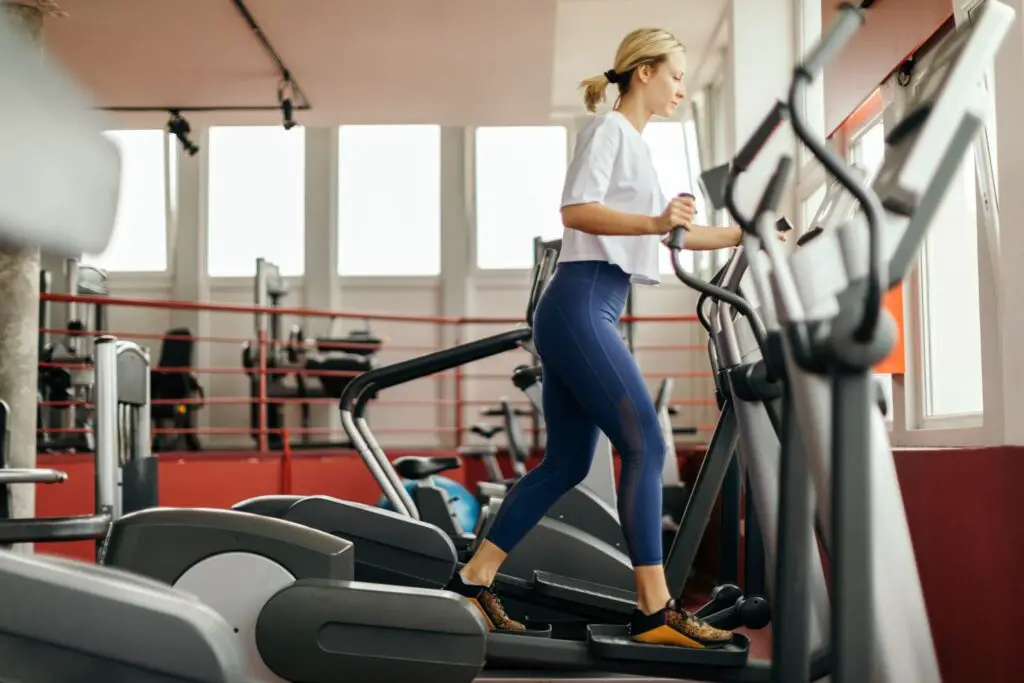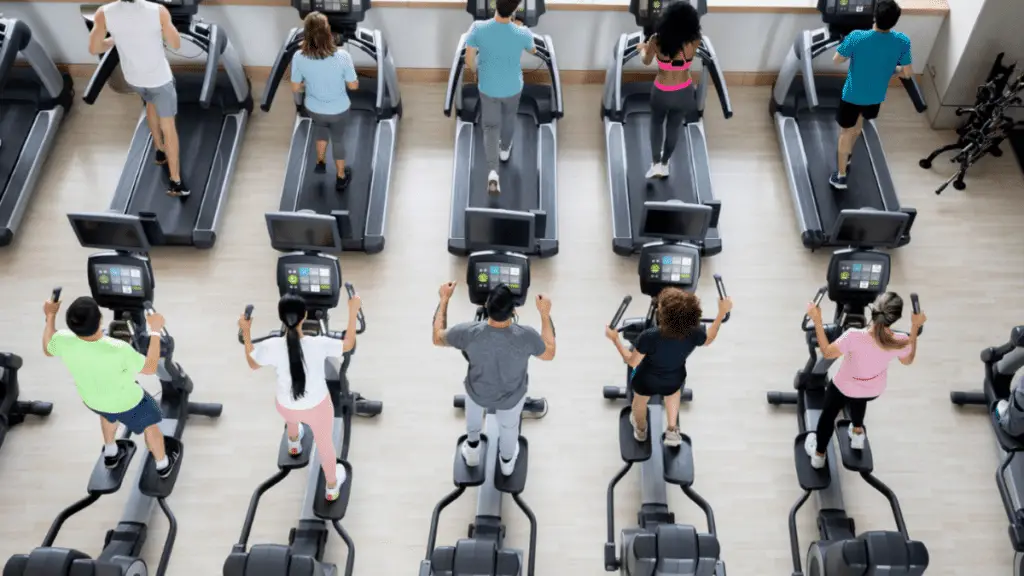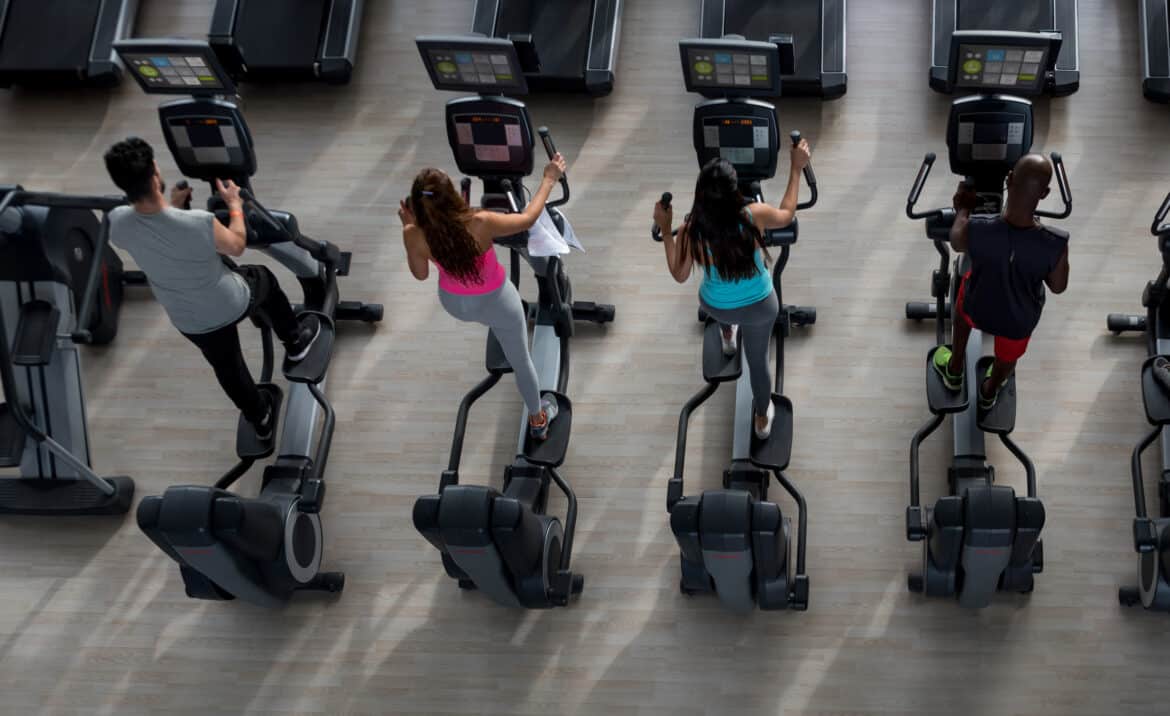Introduction
Which Is Better For Weight Loss Elliptical Or Treadmill: The elliptical machine, often referred to as a cross trainer, is celebrated for its low-impact design. It is a fantastic option for individuals who seek a cardio workout without subjecting their joints to the harsh impact associated with running on a treadmill. By simulating a natural walking or running motion, the elliptical engages multiple muscle groups, making it an excellent choice for a full-body workout. Its built-in handles allow users to work their upper body simultaneously, contributing to enhanced calorie burn. Conversely, the treadmill, a fitness staple for decades, offers an unadulterated running experience that can provide a high-intensity workout.
Running on a treadmill can rapidly elevate heart rate, burning calories efficiently and building lower body strength. The freedom to customize speed, incline, and intensity makes the treadmill an ideal choice for those seeking rigorous training sessions. The decision between elliptical and treadmill ultimately hinges on personal preferences, fitness goals, and physical condition. Those recovering from injuries or with joint issues may gravitate toward the low-impact elliptical, while individuals aiming for an intense cardiovascular workout may lean towards the treadmill.
The choice can also depend on factors such as space availability, budget, and accessibility to these machines. As we embark on this exploration of the elliptical and treadmill’s weight loss benefits, it is essential to recognize that both machines can be powerful tools in your fitness arsenal. To determine which is better for weight loss, we will analyze their respective advantages and limitations, helping you make a well-informed decision that aligns with your fitness journey.

Is treadmill or elliptical better for losing belly fat?
Treadmills and ellipticals both have their pros and cons, but when it comes to weight loss, the treadmill helps you burn a little bit more calories than the elliptical machine. That’s because the treadmill is a high impact machine. What you should choose for your cardio session, depends on your fitness level.
Calorie Burn: Treadmills are known for their high-calorie burning potential. Running or brisk walking on a treadmill engages multiple muscle groups, including the core, which helps in burning calories and reducing overall body fat, including belly fat.
Intensity: You can vary the intensity of your treadmill workout by adjusting the speed and incline. High-intensity interval training (HIIT) on a treadmill can be especially effective for burning belly fat as it elevates your heart rate and metabolism.
Natural Running Motion: Treadmills mimic the natural motion of walking or running, making them suitable for those who prefer traditional cardio exercises.
Low Impact: Elliptical machines provide a low-impact workout, which is gentler on the joints compared to running on a treadmill. This makes them a great option for individuals with joint issues or injuries.
Full-Body Engagement: Ellipticals engage both the upper and lower body simultaneously, including the core muscles. This can help tone and strengthen your abdominal muscles over time, contributing to a flatter belly.
Resistance Options: Many elliptical machines offer adjustable resistance levels, allowing you to tailor your workout to be more challenging and effective for fat loss.
Is it better to get an elliptical or treadmill?
Low-impact movement on an elliptical may also be more suitable for beginners and those recovering from an injury. But the treadmill is more effective for runners who want to increase their speed and endurance. Fitness enthusiasts looking for high-intensity workouts might prefer the treadmill, as well.
Versatility: Treadmills are incredibly versatile. You can walk, jog, or run at various speeds and inclines, making them suitable for people of different fitness levels and goals.
Weight-Bearing Exercise: Running or walking on a treadmill is a weight-bearing exercise, which can help build and maintain bone density, especially for individuals concerned about osteoporosis.
Calorie Burn: Treadmills are excellent for burning calories. Running at higher speeds or inclines can lead to significant calorie expenditure, making them ideal for weight loss and cardiovascular health.
Simulates Real-World Activities: Treadmills mimic natural movements like walking or running, which can help improve your gait and balance.
Impact on Joints: The high-impact nature of treadmill workouts can be hard on the joints, especially for people with joint problems or injuries.
Boredom: Some users may find treadmill workouts monotonous, as they involve repetitive movements without much variety.
Can you lose belly fat by using an elliptical?
An elliptical trainer, or cross-trainer, is a stationary exercise machine used to simulate climbing stairs, walking or running without causing excessive pressure to the joints, hence decreasing the risk of impact injuries. Elliptical trainers can help burn calories, reduce belly fat and tone the body.
Calories Burned
Elliptical machines are excellent calorie burners. They engage both the upper and lower body, offering a full-body workout that can significantly increase your energy expenditure. Burning more calories than you consume is essential for fat loss, and elliptical workouts can help create a calorie deficit necessary for shedding pounds, including those around your belly.
Cardiovascular Exercise
Elliptical workouts are primarily cardiovascular exercises. Engaging in regular cardiovascular exercise is crucial for overall fat loss. When you use an elliptical, your heart rate increases, and this sustained elevation in heart rate helps burn calories and fat. As you lose overall body fat, the fat stored around your belly will also diminish.
High-Intensity Interval Training (HIIT)
One of the advantages of using an elliptical is that it allows for high-intensity interval training (HIIT). HIIT workouts involve short bursts of intense effort followed by periods of rest or lower-intensity activity. HIIT has been shown to be particularly effective for burning fat, including abdominal fat. Incorporating HIIT sessions into your elliptical routine can help accelerate belly fat loss.
Muscle Engagement
Using an elliptical engages various muscle groups, including your core muscles. While it won’t specifically target belly fat, strengthening your core muscles can improve posture and create a more toned appearance in your midsection as you lose fat. A stronger core can also enhance overall stability and balance.
Consistency is Key
Losing belly fat or any fat from specific areas of your body requires consistency. While the elliptical can be a valuable tool, it’s essential to complement your workouts with a well-balanced diet that includes a calorie deficit. Spot reduction is not achievable through exercise alone, so overall fat loss is the key to reducing belly fat.
Which burns more calories a treadmill or an elliptical?
Because of the incline and the ability to adjust and maintain speed, you can also burn more calories on a treadmill than you can on an elliptical.
Running and Walking: Running or brisk walking on a treadmill engages large muscle groups, including the legs, core, and even the upper body to some extent. The more intense the workout, the more calories you burn.
Incline Feature: Treadmills often come with an incline feature, allowing you to simulate uphill terrain. Inclines increase the intensity of your workout, leading to a higher calorie burn.
Speed Control: You can adjust the treadmill’s speed to vary the intensity of your workout. Higher speeds require more effort and therefore burn more calories.
High-Intensity Interval Training (HIIT): Treadmills are ideal for HIIT workouts, which involve short bursts of high-intensity exercise followed by periods of rest. HIIT is known for its calorie-torching abilities.
Low Impact: Ellipticals provide a low-impact workout, which is gentler on the joints compared to running on a treadmill. This can make them a preferred option for individuals with joint issues or injuries, allowing for longer and more comfortable workouts.
Full-Body Engagement: Ellipticals engage both the upper and lower body simultaneously, which can increase calorie expenditure. The elliptical’s handlebars allow you to work your arms, further boosting the overall calorie burn.
Is 30 minutes on the elliptical enough to lose weight?
It engages the upper and lower body simultaneously, involving multiple muscle groups. 30 minutes on the elliptical per day will burn an average of 335 calories, according to Harvard Health Publishing.
Intensity: The intensity of your workout plays a crucial role. If you’re working out at a moderate to high intensity, you will burn more calories in 30 minutes compared to a low-intensity session.
Resistance: Many elliptical machines allow you to adjust the resistance level. Increasing the resistance can make your workout more challenging and result in higher calorie expenditure.
Speed: The speed at which you use the elliptical can impact calorie burn. Faster workouts generally burn more calories.
Body Weight: Your weight also affects calorie burn. Heavier individuals typically burn more calories during exercise.
Does elliptical reduce waist size?
So, are ellipticals good for belly fat and fat reduction overall? The answer is a resounding yes. In fact, elliptical machines facilitate a highly accessible and low-impact activity that can be used to burn calories, get in great cardio sessions, and work all of the major muscle groups.
Burning Calories and Fat
Using an elliptical machine can contribute to overall weight loss and fat reduction. When you engage in regular elliptical workouts, you create a calorie deficit, which is essential for shedding excess pounds, including fat stored around the waist. Reducing overall body fat can lead to a smaller waist size over time.
Full-Body Engagement
Ellipticals offer a full-body workout that engages various muscle groups, including the core. The elliptical’s handlebars allow you to work your arms, while the leg movement activates your lower body, including the muscles around your waist. Consistent use of the elliptical can help tone these muscles, which can contribute to a firmer and more defined waistline.
Cardiovascular Benefits
Elliptical workouts provide cardiovascular benefits, raising your heart rate and increasing your metabolism. This helps in burning calories during and after your workout, promoting overall fat loss, which includes the fat around your waist.
High-Intensity Interval Training (HIIT)
Incorporating high-intensity interval training (HIIT) into your elliptical workouts can be particularly effective for reducing waist size. HIIT involves short bursts of intense exercise followed by brief periods of rest or lower-intensity activity. It has been shown to be effective in burning fat, including abdominal fat.
Core Strengthening
While the elliptical mainly targets the lower body, the core muscles are activated to stabilize your posture during the workout. Strengthening these core muscles can improve your overall posture, which can make your waist appear slimmer and more defined.
Is it better to go fast or slow on elliptical?
DON’T: Go too fast
Although you may think that moving faster will burn more calories, if you pedal too quickly you’ll gain too much momentum and won’t be able to fully engage your muscles. Try to find a happy medium.
Weight Loss and Cardiovascular Fitness: If your primary goal is to lose weight and improve cardiovascular fitness, incorporating fast elliptical workouts, especially with HIIT intervals, can be highly effective.
Joint Health and Low Impact: If you have joint issues or prefer low-impact exercise, slow-paced elliptical workouts provide a gentler option while still offering a good cardiovascular workout.
Muscle Toning and Endurance: For those interested in muscle toning, endurance building, or focusing on specific muscle groups, slow elliptical workouts with a focus on form and control can be beneficial.
Variety: Incorporating both fast and slow elliptical workouts into your routine can provide variety, prevent workout plateaus, and target different aspects of fitness.
Does elliptical burn as much as treadmill?
However, scientific data shows that a treadmill can burn more calories than an elliptical. According to one study from the Medical College of Wisconsin, the average calories burned jogging on a treadmill for one hour was 705 to 866, whereas it was an average of 773 calories burned per hour for ellipticals.
High-Impact Nature: Running or brisk walking on a treadmill is a high-impact exercise that engages the muscles of the lower body, including the legs and glutes. The impact of running, in particular, can lead to a significant calorie burn.
Incline Feature: Treadmills often feature an incline option, allowing you to simulate uphill terrain. Walking or running on an incline increases the intensity of your workout, resulting in more calories burned.
Speed Control: Treadmills offer the flexibility to adjust your speed. Faster running or walking speeds require more effort and can result in a higher calorie expenditure.
On average, a person weighing around 155-160 pounds can burn approximately 335-365 calories during a 30-minute moderate-intensity elliptical workout. In contrast, running on a treadmill at a moderate pace can burn around 290-335 calories in the same amount of time. However, these numbers are approximate and can vary based on several factors, including workout intensity, speed, duration, and individual characteristics such as weight and fitness level.

Conclusion
In the age-old debate of elliptical versus treadmill for weight loss, there is no definitive winner. Instead, the verdict lies in understanding the unique qualities of each machine and aligning them with your individual fitness goals and preferences. The choice between the elliptical and treadmill should not be viewed through a one-size-fits-all lens; rather, it should be driven by factors such as physical condition, personal fitness objectives, and lifestyle considerations. The elliptical machine offers a low-impact, full-body workout, making it an excellent choice for individuals seeking weight loss without placing excessive stress on their joints. It is particularly beneficial for those recovering from injuries or managing joint issues. With its built-in handles for upper body engagement, the elliptical can provide an efficient calorie-burning session.
On the other hand, the treadmill’s allure lies in its capacity to provide an intense cardio workout by simulating natural running or walking motions. Its ability to adjust speed, incline, and intensity makes it a versatile tool for those looking to elevate their heart rate and shed calories quickly. The choice between these two fitness machines depends on your unique circumstances and objectives. If weight loss is your primary goal and you have no joint concerns, a treadmill may offer a higher calorie-burning potential due to its high-impact nature.
However, if you prioritize joint health, seek a full-body workout, or desire a low-impact option, the elliptical can be an excellent choice. The best approach to weight loss often involves variety and consistency in your fitness routine. Combining both the elliptical and treadmill, along with other forms of exercise like strength training and flexibility exercises, can provide a well-rounded fitness regimen that enhances your chances of achieving your weight loss goals.

